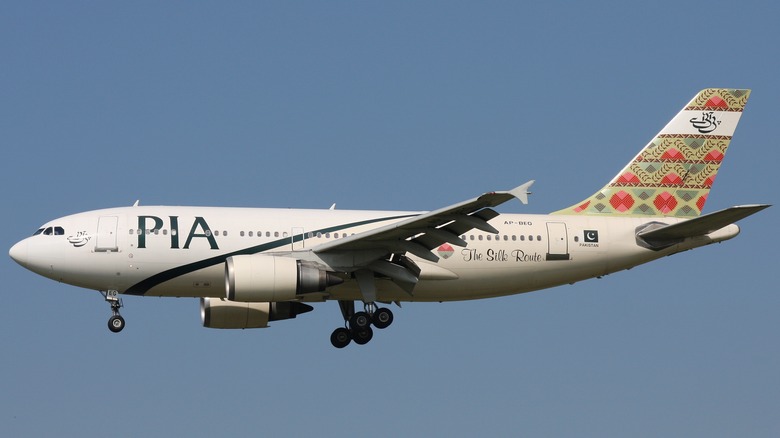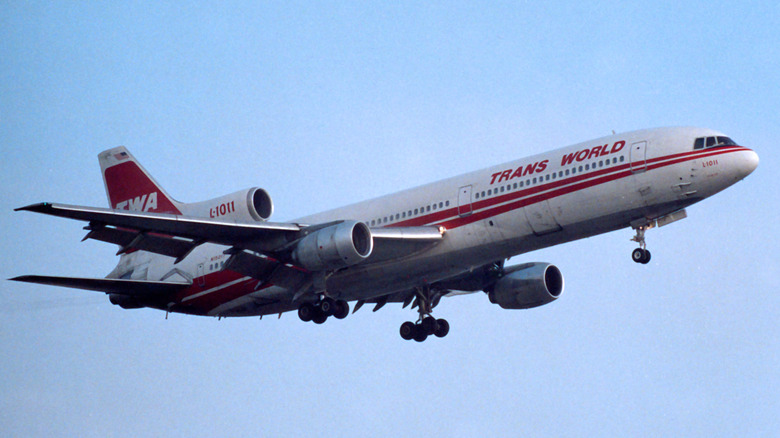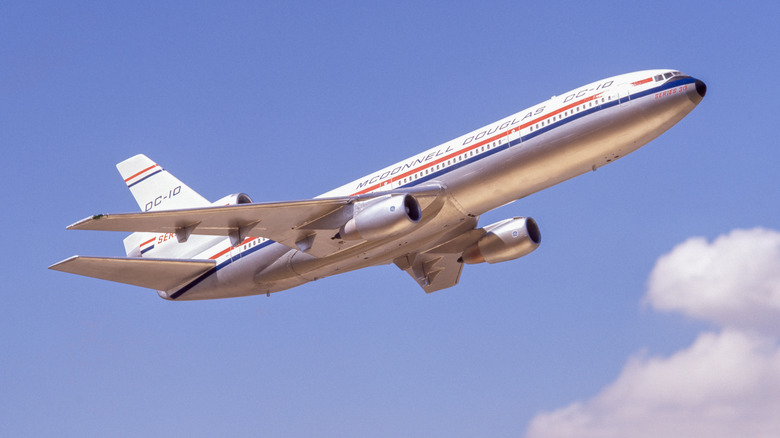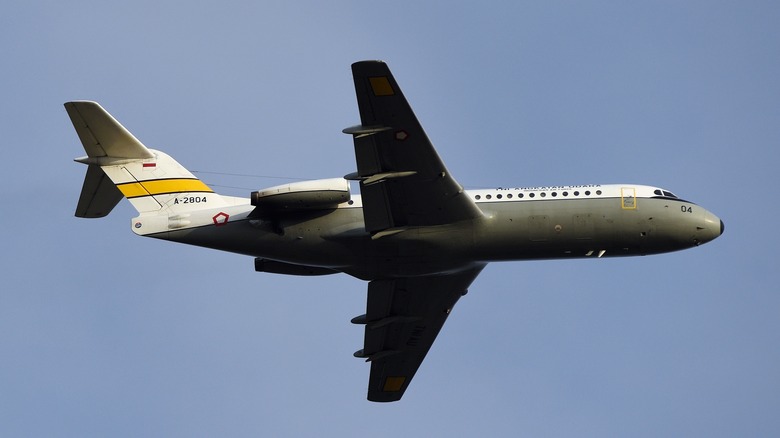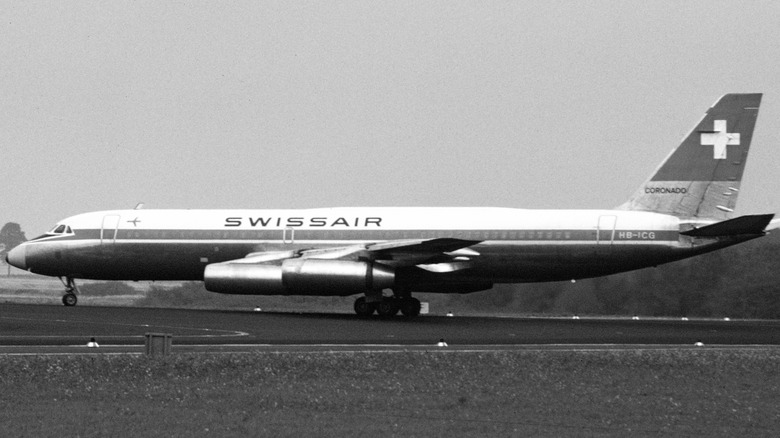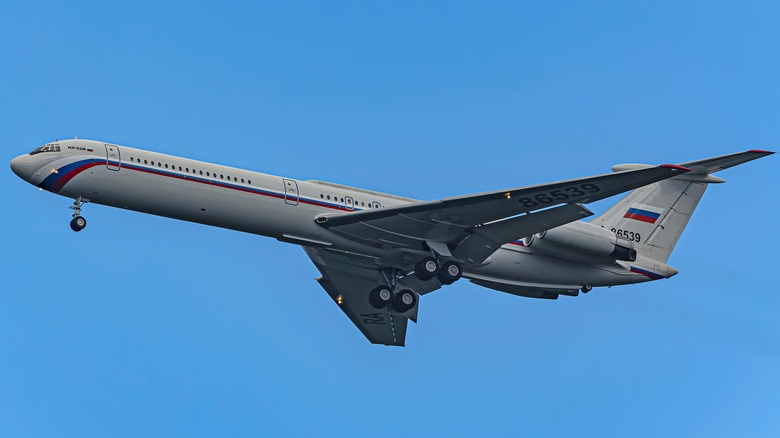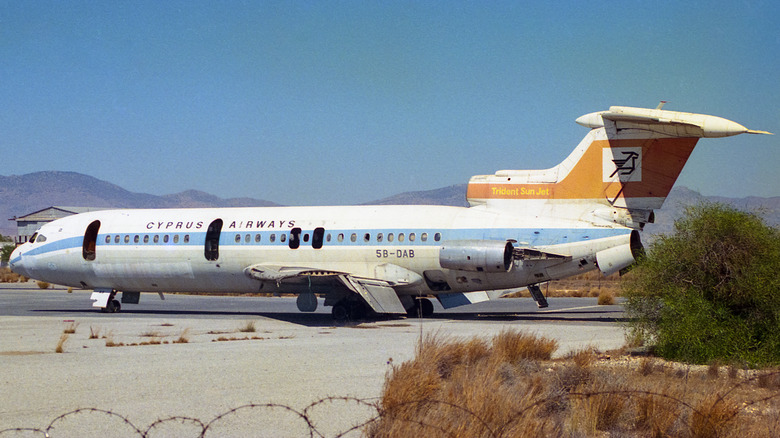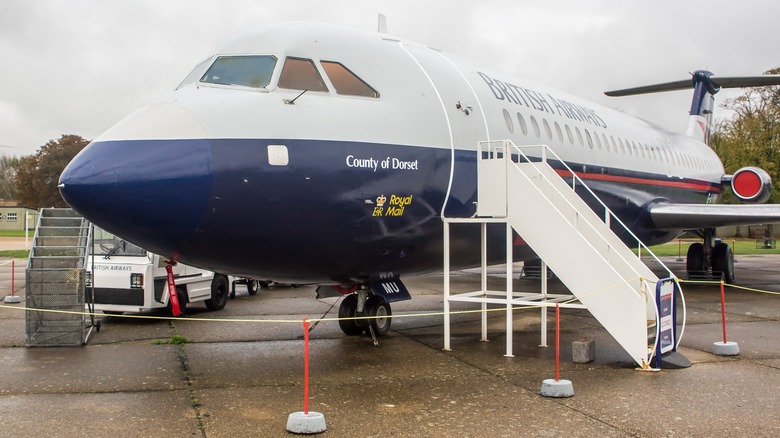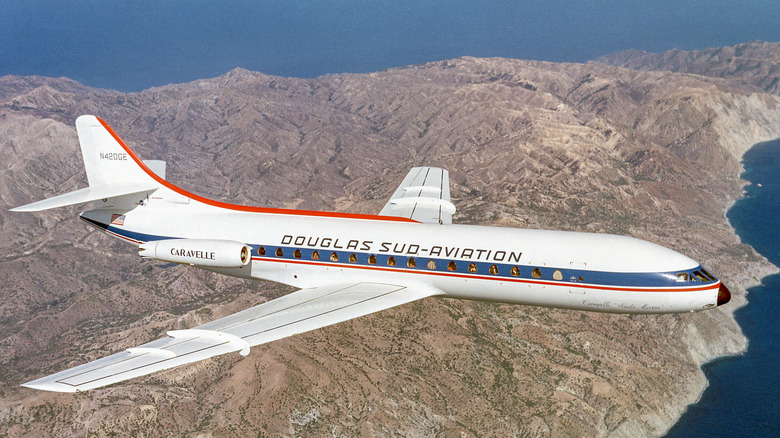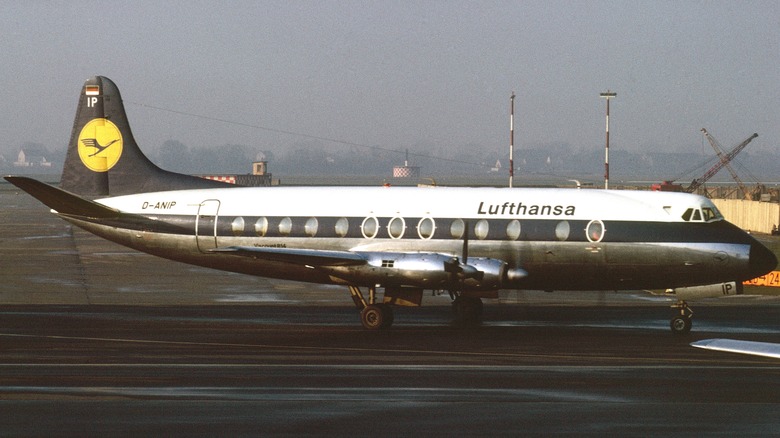10 Forgotten Passenger Jets That Once Graced The Skies
Jetliners are airborne behemoths that have shuttled passengers from place to place since the mid-20th century. But while passenger jets produced by Boeing and other aviation heavyweights have become so commonplace that even small children can point them out, many others have faded into history despite their amazing contributions.
From the early innovation of the Vickers Viscount to the unique features of the Ilyushin Il-62 and beyond, let's explore the technological advancements, interesting developments, and the continued legacy of some of the forgotten greats of the past 70 years. Some of these jets were retired from commercial use after decades of service, often finding second lives as freighters, in the military, firefighting, or even with NASA. And some were never commercial successes in the first place, whether due to stiff competition or high costs.
Despite challenges over the years, jet liners remain a vital part of global transportation, with thousands of planes in the air at any given time. You might recognize some of these planes from movies, TV shows, or even from your own travels, underscoring their significant role in both the aviation industry and popular culture.
Airbus A310
The A310 began life in 1983 as one of Airbus' earliest commercial aircraft. It was a big, economical passenger jet that featured lots of seating for passengers. Like its comparatively smaller counterpart the A320, this jet was based on the earlier Airbus A300. The A310 came in two main types, the A310-200 and the A310-300.
The A310-200 was the initial variant and mainly used for shorter local or regional flights. With that being said, it had an impressive range of about 3,200 miles. This, and its capacity for around 280 passengers, made it quite advanced for its time. Although the A310-200 was slightly smaller than the A300, it remained popular due to its versatile usage as both a freighter and a passenger airliner.
The A310-300 was a jet with a very long range and could handle longer-haul flights. It, too, was based on the A300, but a little smaller. It managed a range of up to around 5,970 miles, which made it ideal for transatlantic flights, though it was still used regionally as well.
The A310 wasn't just a one-trick pony, regardless of its variants. For the duration of its use, it was utilized for both carrying passengers and cargo. This versatile, long-lasting jetliner was the first aircraft made by Airbus that was approved for extended-range twin-engine operational performance (ETOPS), which had a lasting impact on Airbus' aircraft development.
Lockheed L-1011 TriStar
The Tristar was a rather unsuccessful commercial liner produced by Lockheed back in 1970 when it made its maiden flight, though it didn't enter commercial service until two years later in 1972. It was a three-engined jetliner that fell in size somewhere between the Boeing 747 and the DC-10. This put it in tough competition, but it was able to stand out somewhat due to its more sophisticated landing system.
The Tristar specialized in medium-to-long-distance flights. Its advanced avionics and high-quality engines also helped it stand out, but they were also to blame for its checkered release. The TriStar was plagued with problems from the get-go, with production delays due to issues with its engines, which were made by Rolls-Royce.
Another thing that made the TriStar stand out was its unique internal configuration with a separate galley deck and a staff elevator that allowed food to get from the kitchen to the passengers in a very short amount of time. This "gourmet service" was just one of the more luxurious features that the TriStar had. It was also famed for its quiet and smooth ride, thanks to the Rolls-Royce engines. However, none of this was enough to make it commercially successful. Despite production in 1983, the TriStar continued to be used by the British Royal Air Force as a freighter up until 2014, when it had its last flight.
McDonnell Douglas DC-10
Introduced first in 1970, the McDonnell Douglass DC-10 was similar in scope to the ubiquitous Boeing 747, but had a smaller frame. It was known for its spacious cabin and was popular with passengers due to its generous seating and perceived comfort. It had a few different versions, including the 10-10, meant for shorter routes, and the 10-30 and 10-40, meant for international travel and longer hauls.
The DC 10-10 was mainly intended for domestic travel. This variant featured two main landing gears, which restricted it somewhat in terms of balance and weight distribution. This imbalance was compensated for in later variants by adding a third landing gear for better weight distribution.
The DC-10 was not without its flaws, though. It had a third engine mounted on its tail, which made it unique in profile, but increased noise output overall. Its reputation was also sandbagged from the beginning as there were several high-profile incidents involving this model. On the positive side, these accidents led to the development of new designs and safety features in later planes.
There was also a military version of the DC-10, known as the KC-10 Extender. This military version being in use made it easier to retrofit commercial DC-10s later to find use as a freighter and cargo plane. McDonell Douglass eventually succeeded the DC-10 design with the MD-11, which was similar but had a longer fuselage and better overall performance.
Fokker F28 Fellowship
The F28 was a collaborative European effort to produce a more efficient plane with engineers from the Netherlands, Germany, and Northern Ireland working together in tandem. The F28 made its maiden voyage in 1967, marking Fokker's foray into jet territory. It was the successor of the F27, the "Friendship," a turboprop plane that, despite not being a jet, offered similar speeds.
The Fellowship had a couple of unusual features. There was an airbrake embedded into its tail, which enabled the F28 to make better use of smaller airstrips. This made it popular with small, regional airports because it opened new routes in under-serviced regions.
Like other planes on the list, the F28 had several variants that came in various hull configurations and passenger capacities. In total, there were five main models, with each offering different configurations of seating, range, and amenities.
The F28 was used widely across Europe, Asia, and Africa, with over 240 units being produced during its usage lifetime. It was known as a robust, dependable jet that had a high wing profile which gave it excellent visibility from the cockpit. Despite it being an older model, and despite it being retired from major commercial use, you can still find some Fellowships being employed by smaller operators for specialized use cases.
Convair 990 Coronado
The Coronado 990 was produced starting in 1962 with the goal of being the quickest jet in the air. In this endeavor it was ardently successful, managing to hold the record for the fastest airliner for a brief period back in the 60s. It was capable of impressive feats of speed and was able to reach Mach 0.89, nearly the speed of sound.
This incredible speed came with many prodigious downsides, though. Namely, the 990 ended up being a gas-chugging nightmare, which detracted from its success metrics. Only a few were ever actually made, 37 in the entire production run. This was in part due to the cost of fueling the 990 while there were other more economical choices on the market from competitors like Boeing and Douglas.
Before its retirement, the main airlines to employ the 990 were Swissair and American Airlines, but it was a brief career. However, after its commercial retirement in the 70s, the 990 found use with NASA in the 80s because its high speeds allowed useful testing of similar systems to the space shuttle. It was rather sturdy and reliable, thanks to its all-metal construction and the anti-shock bodies that adorned its wings, which also made it useful in NASA's experiments.
Ilyushin Il-62
The Ilyushin Il-62 was a product of the Cold War introduced in 1963, heralded as the Soviet Union's first long-range jet. It truly was a behemoth, holding the record for being the largest jet of its era in the 60s. With its gargantuan size, it managed to squeeze in 186 passengers, setting it apart from other jets at the time.
It was considered a marvel of Soviet engineering and famed for its balance and weight distribution. The Il-62 was unusual in its engine placement: Four engines were mounted at the rear of the fuselage. While it wasn't the Soviet Union's first long-hauler, it was the largest, lending to a reputation of being outstandingly robust and reliable.
As with other jets, it came in a couple of variants, with the Il-62M being the most notable. The Il-62M included a fuel tank in a tail fin, which extended its overall flight range, making it the go-to jetliner in the Soviet bloc. As with a lot of Soviet tech, once they had something figured out, they put it to use for quite a while. The Il-62 was in use for over 20 years, with 292 units produced during that period. It was last used commercially in 2009, but there were some limited military uses even later than that.
Hawker Siddeley Trident
Introduced in 1962, the Hawker Siddeley Trident was known for its role as the first commercially used trijet. Despite its various innovations, the Trident faced tough competition from the likes of Boeing and Douglas and ultimately lost out in the market. Only 117 Tridents were built during its production run, due to limited demand.
The Trident had three engines mounted at the back of the fuselage, one on top and two at the bottom, which gave it a very interesting look. It had a T-configuration tail fin, which further distinguished it and made for an eye-catcher on the runway.
The jet came with cutting-edge flight controls, an automatic landing system, and speed brackets in its fuselage, which very few contemporaries had. This all amounted to a relatively expensive production cost, though nowhere near as expensive as the most expensive commercial passenger jets ever built.
The Trident had several variants such as the 1E, which focused on shorter flights, and the 3B which had more passenger space and was geared more towards longer hauls.
The primary operator of the Trident was British European Airways, which employed it on short-haul and medium-haul routes between U.K. and mainland Europe. The last Trident in commercial use was retired in 1995, marking 33 years in service.
BAC 1-11
The BAC 1-11's origins are in original designs meant for a turboprop plane. This line of design was eventually scrapped in favor of a passenger jet concept. The 1-11 made its debut in 1965 and was used as a short-haul jetliner for over 50 years with its last commercial flight in 2019. It was developed by the British Aircraft Corporation (BAC) to rival the French Sud Aviation Caravelle.
Also known as the One-Eleven, the plane focused on shorter flights, and the original configuration seated around 80 passengers. This configuration was primarily focused on intercity travel within the U.S. or intra-continental flights within Europe. It sported a rear-mounted engine configuration which improved the cabin noise levels. That, along with its fully pressurized cabin, made for incredible levels of comfort for its passengers.
The One-Eleven came in several variants, including the 200, 300, 400, and 500, with each specializing in excelling in specific metrics. Among these, the 500 was notable with its much longer fuselage which allowed for an increased number of passengers. It also proved to have a much longer range, thanks to its Rolls-Royce Spey engines, which upgraded the One-Eleven's already improved fuel economy.
Around 244 units were built, and they all mainly operated in Europe, North America, and Africa. The One-Eleven was known for its high fuel efficiency which led to very low operating costs and fared well against competition such as the Caravelle and the DC-9.
Sud Aviation Caravelle
The Caravelle is one of the oldest passenger jets on our list, with the model's first commercial flight all the way back in 1959. For a jet that still had commercial flights into the early 2000s, that's quite a long lifetime. Its design aimed to modernize European air travel and to provide a fast, reliable, and economical choice in jetliners for European airlines.
Like some other jets on the list, the Caravelle forwent wing-mounted engines in favor of engines at the back of its fuselage, though in a more familiar two-engine configuration. While innovative for the time, it meant that power was a little weaker than other contemporary jets.
The Caravelle excelled at short- and medium-haul flights and seated about 80 passengers, which made it perfect for continental flights. It was known for its fuel economy and performance, which only improved in later variants.
The original SE 210 Caravelle I model had a few notable variants including the Caravelle III, which had stronger engines and could seat slightly more passengers. The later Caravelles 10B and 11R were contemporaries of one another, and could seat even more passengers, reaching up to 140 passengers.
In total, 282 Caravelles were produced between production years 1958 and 1972. Its last commercial flight was in 2005, closing a chapter on a pioneering jetliner that set new standards in aircraft engineering and certainly earned its spot in aviation history.
Vickers Viscount
The Viscount was a real game-changer when it debuted in 1948. It was the first turboprop plane to haul passengers, which was a big deal for British aviation company Vickers-Armstrongs. It was originally conceived after WWII, as demand for more efficient inter-country travel was rising.
The plane had a fully pressurized cabin, which was a technological novelty at the time, and made it far more comfortable for passengers than some other contemporary competition. It also featured more passenger-oriented features than other commercial planes at the time, like improved seating and panoramic windows that allowed passengers to take in the view better. These small touches, from a passenger's perspective, made the interior feel far less cramped.
The Viscount was put into use around the world as different airline operators were impressed by its operational efficiency and positive passenger experience. Its success helped to prove that turboprop engines were still viable and could be used in economical engineering. This kind of long-term thinking and innovation may be partly responsible for why airplanes haven't changed much in the last half-century.
As jetliners rose in popularity, the Viscount's novelty waned and it slowly lost its popular foothold in the late '60s. A total of 445 Viscounts were built between its debut and 1964. This amazing airliner was still in commercial use up to the '90s, though some continued in private use until as late as the 2000s.

